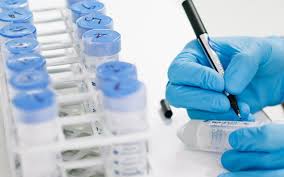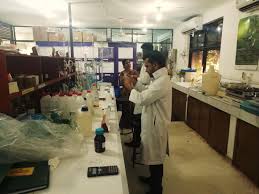The Red Sea environmental study conducted in Egypt has unveiled some unexpected and thought-provoking discoveries. As one of the most biologically diverse marine environments in the world, the Red Sea boasts a wealth of unique ecosystems and species. With a focus on the environmental health environmental measurements laboratory and sustainability of this region, the study has shed new light on the complexities and intricacies of this vibrant and vital ecosystem.
The environmental study of the Red Sea in Egypt revealed surprising findings about the biodiversity and ecosystems present in this region. Researchers discovered a new species of fish and several previously unknown species of invertebrates. Additionally, the study found that the Red Sea's coral reefs are more resilient to climate change and human impacts than previously thought. This is promising news for conservation efforts in the area. The study also highlighted the need for continued research and protection of the Red Sea's unique environmental service labs and valuable ecosystems.
Underwater Life in the Red Sea: A Biodiversity Hotspot

The Red Sea is home to a diverse range of marine life, with over 1,200 species of fish and 1,100 species of invertebrates identified. The unique combination of warm, clear waters and extensive coral reefs make it a biodiversity hotspot, attracting divers and researchers from around the world. The Red Sea is also home to a number of iconic species environmental services companies such as the dugong, hammerhead sharks, and the vibrant Nemo fish. The coral reefs are particularly rich in diversity, with over 200 species of hard coral and 100 species of soft coral, providing a habitat for a wide range of marine life. In addition to its rich biodiversity, the Red Sea is also home to a number of unique geological formations and underwater landscapes, including deep-sea canyons, seagrass meadows, and mangrove forests. However, like many marine ecosystems, the Red Sea faces threats from pollution, overfishing, and climate change, making conservation efforts crucial to protect this valuable biodiversity hotspot.
Impact of Climate Change on Red Sea Coral Reefs

Coral reefs in the Red Sea are facing the impacts of climate change, including rising sea temperatures and ocean acidification. Warmer waters can cause coral bleaching, in which the symbiotic relationship between corals and the algae that live within their tissues breaks down, leading to the loss of the algae and the coral's color. This can ultimately result in the death of the coral if the stress is prolonged. Ocean acidification, caused by the absorption of excess carbon dioxide by seawater, can also harm coral reefs by limiting the availability of carbonate ions needed for coral skeleton growth and maintenance. Additionally, extreme weather events such as storms and hurricanes, which are predicted to become more frequent and severe with climate change, can physically damage coral reefs. These combined impacts have the potential to significantly degrade the health and resilience of Red Sea coral reefs, with implications for the diverse marine life that depends on these ecosystems. Efforts to reduce greenhouse gas emissions and protect coral reef habitats are critical for mitigating these impacts.
Conservation Efforts for Red Sea Endangered Species

Conservation efforts for endangered species in the Red Sea are primarily focused on monitoring and protecting the populations of key species such as sea turtles, dugongs, and various species of sharks and rays. This includes research to better understand their habitats, behavior, and threats they face, as well as efforts to establish and manage protected areas where these species can thrive. Additionally, conservation organizations work with local communities and governments to promote sustainable fishing practices, reduce pollution, and mitigate other threats to these species' survival. These efforts are crucial for ensuring the long-term survival of these iconic and ecologically important species in the Red Sea.
Pollution Threats to the Red Sea Ecosystem

The Red Sea ecosystem faces pollution threats from a variety of sources, including oil spills, untreated sewage, and industrial waste. Runoff from agricultural areas and tourism activities also contribute to the pollution of the Red Sea. These pollutants can harm marine life, damage coral reefs, and disrupt the balance of the ecosystem. Additionally, the Red Sea is also at risk of plastic pollution, which can have a devastating impact on marine animals and the overall health of the sea. Efforts to mitigate and prevent pollution in the Red Sea are crucial to protecting its delicate and diverse ecosystem.
Rising Temperatures: Red Sea Marine Life at Risk
Rising sea temperatures in the Red Sea are putting marine life at risk. Warmer waters can lead to coral bleaching, which poses a threat to the diverse ecosystem in the region. Additionally, rising temperatures can disrupt the balance of marine life, impacting fish populations and other organisms. This has significant implications for the fishing industry and the wider ecological health of the Red Sea. Efforts to mitigate this risk include monitoring and protecting vulnerable species, as well as addressing the root causes of rising sea temperatures through sustainable practices and policy measures.
The Fragile Balance of the Red Sea's Coastal Areas
The Red Sea's coastal areas face a fragile balance due to a variety of factors, including overfishing, habitat destruction, pollution, and climate change. These human-induced pressures have led to declining fish populations, loss of habitat such as mangroves and coral reefs, and degradation of water quality. The Red Sea is also a hotspot for international shipping and maritime trade, further exacerbating the challenges faced by its coastal ecosystems. Conservation efforts and sustainable management practices are essential in order to preserve the ecological balance of the Red Sea's coastal areas. This includes implementing effective marine protected areas, regulating fishing activities, reducing pollution, and promoting sustainable tourism practices. Collaboration among countries bordering the Red Sea, as well as international organizations, is crucial to address these complex challenges and ensure the long-term health of the region's coastal ecosystems.
Sustainable Tourism in the Red Sea: Finding the Balance
environmental testing services
Sustainable tourism in the Red Sea involves finding a balance between promoting travel and economic development while protecting the region's natural and cultural resources. This includes minimizing the environmental impact of tourism activities, supporting local communities, and preserving the unique marine and terrestrial ecosystems of the area. Key initiatives include promoting responsible diving and snorkeling practices, developing sustainable accommodation options, and implementing regulations to protect the Red Sea's diverse wildlife. Additionally, efforts are being made to raise awareness among tourists about the importance of preserving the region's natural and cultural heritage.